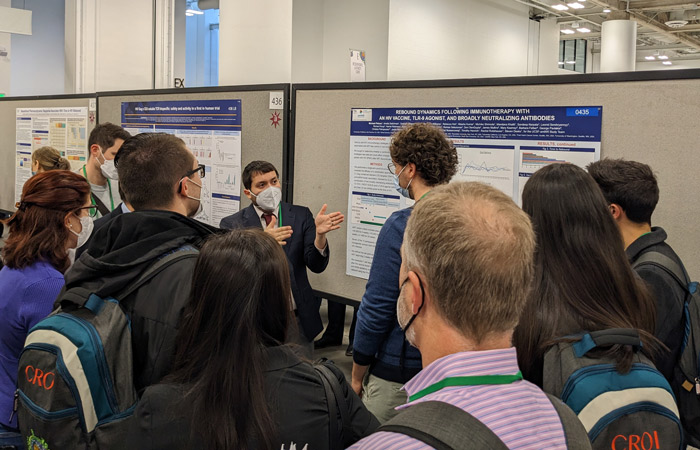amfAR Cure Trial Shows Proof of Concept
Findings from at least 12 amfAR-funded research projects were presented at the 30th annual Conference on Retroviruses and Opportunistic Infections (CROI) in February. Topics ranged from characterizing the HIV reservoir to the effects of COVID in people living with and without HIV.
Some the most exciting news came out of the amfAR Institute for HIV Cure Research at the University of California, San Francisco (UCSF). Its groundbreaking clinical trial tested a combination of agents in an effort to induce post-treatment control in people living with HIV. Post-treatment control would allow people living with HIV to safely discontinue antiretroviral therapy (ART) and thus avoid the associated costs, toxicities, and side effects.

The culmination of a years-long effort by dozens of medical and laboratory scientists, the Phase 1/2 single-arm proof-of-concept study conducted at UCSF evaluated the efficacy of a combination immunotherapy approach to control HIV once ART is stopped. The combination included:
- several doses of a DNA vaccine administered with an immune hormone to boost immune responses;
- a viral vector vaccine to further enhance immunity
- two broadly neutralizing antibodies (bNAbs) to reduce the reservoir, combat circulating viruses, and enhance cellular immunity; and
- an immune modulator (TLR-9 agonist) to expand immune function.
To assess the ability of the intervention to induce post-treatment control, an analytic treatment interruption (ATI) phase invited trial participants to stop taking their ART temporarily, a process closely monitored by researchers.
The study, which received additional support from Gilead Sciences, enrolled 10 participants (nine cisgender men, one transgender woman), whose HIV was well-controlled by ART.
The majority of participants showed evidence of virologic control after ART was stopped. While almost all showed signs that the virus persisted, seven of the 10 did not rebound in the usual way, where a rapid burst of uncontrolled viral growth would otherwise be expected. Instead, these seven reached a resting state in which virus was controlled in the absence of ART below 5,000 copies/mL of blood, two of whom maintained copies below 1,000. For one individual, viral rebound has not occurred as of 18 months off ART, with signs of sustained HIV reservoir reduction during the ATI.
This study established proof of concept that combination immunotherapy may induce post-treatment control by altering facets of the virus or the immune response to it, and it provides a wealth of clues for scientists to build on for a scalable HIV cure.
Share This:
